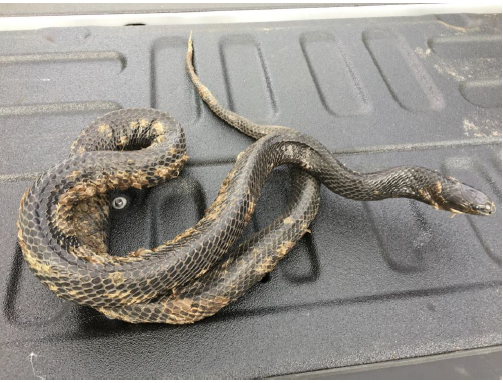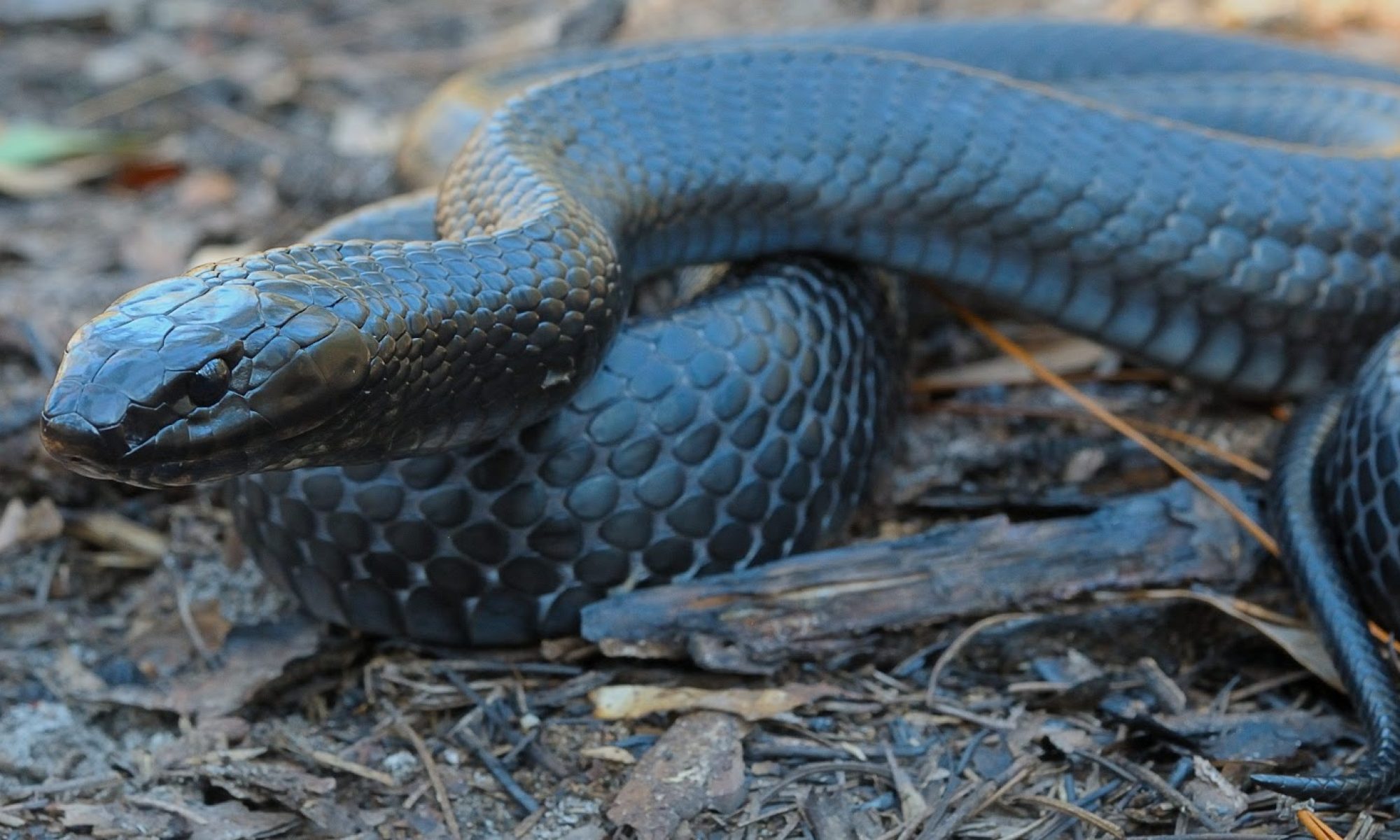A health assessment has been completed of 61 wild eastern indigo snakes captured in southeastern Georgia (Knafo et al. 2016). Similar to a south-central Florida study (Layne and Steiner 1996), they found that a high percentage of snakes examined during the winter months had scabrous boils and skin lesions varying from superficial wounds to ones extending down to muscle tissue. Based on mark-recapture and health assessment studies, snakes seem to commonly recover from the boil-lesion condition that generally disappears in the summer months (Stevenson et al. 2009, Knafo et al. 2016). Healthy eastern indigo snakes commonly harbor a wide variety of endoparasites; however, these organisms are generally common in wild snakes and may not negatively affect the species (Foster et al. 2000, Knafo et al. 2016). However, Metcalf et al. (2018) documented one eastern indigo snake in Collier County, Florida where parasite load from Kiricephalus coarctatus was determined to be a contributing factor to the snake’s death.
Snake fungal disease (SFD) (Ophidiomyces ophiodiicola) is an emerging disease that has infected snakes throughout the eastern United States, including eastern indigo snakes in Georgia, and has been implicated in the population declines of several snake species (Lorch et al. 2015, Chandler et al. 2019, entire). Snake fungal disease is a fungal pathogen of endemic and captive snakes in North America and can persist in soil as well as colonize living hosts (Allender et al. 2015). In Georgia, an on-going study by The Orianne Society documented 117 positive SFD (positive DNA qPCR test) infections of 786 sampled snakes with positive results for 22 species, with water snakes (genus Nerodia) and the eastern indigo snake exhibiting the highest rates of infection (43.9%) (Chandler et al. 2018, 2019 entire). In some cases minimal to extensive scabbing and lesions may be noticeable on the snake (Figure 19), however snakes with presence of scabbing or lesions do not always test positive for SFD (Chandler et al. 2018, p.19). No reports of SFD in eastern indigo snakes from Florida have been documented (Enge 2018, Rothermel 2017, p. 23) but few specimens of eastern indigo snakes from Florida have been examined for SFD. Eastern indigo snakes may exhibit a high prevalence of SFD during winter months when the snakes are often hibernating underground (e.g. in tortoise burrows) in humid environments that make them more susceptible to developing SFD than at other times of the year. Eastern indigo snakes may be able to rid themselves of SFD by shedding. The long-term prognosis for SFD and eastern indigo snakes is unknown and research is on-going to collect additional samples to better understand its effects on the eastern indigo snake and other snake fauna (Chandler et al. 2018, p. 20).

The protozoa Cryptosporidium spp. are a significant cause of parasitic disease in snakes. The two most significant species in snakes are Cryptospordium serpentis, which has a gastric tropism and Cryptosporidum varanii, which has a small intestinal tropism (Lock and Wellehan 2015 entire, Wellehan and Stahl 2015, entire). Symptomatic snakes infected with C. serpentis often have poor growth, weight loss, regurgitation, and gastric hypertrophy leading to a visible mid-body swelling. The most common clinical sign, regurgitation, leads to chronic weight loss and muscle wasting. Snakes infected with C. varanii usually have wasting, poor growth, and diarrhea, with no symptoms of regurgitation (Wellehan and Stahl 2015, entire). It has been proposed that reptiles that are immunosuppressed by stress or concurrent illness are more likely to develop clinical signs. Snakes infected with C. serpentis can enter a chronic carrier state where they do not show clinical signs, and intermittent shedding of organisms does occur.
Reported prevalence and fate of snakes with C. serpentis in captive and wild populations is not well studied. An extensive survey of over 500 wild and captive reptiles over three continents found a 3% prevalence of infection with Cryptosporidium (Upton et al. 1989, entire). However, it seems there is a higher prevalence rate in captive populations (Sevá et al. 2011, entire) and infection may be more common in the zoological collections than traditionally thought. Partners in Georgia and Florida are currently expanding surveys to research the occurrence of C. serpentis in wild snake populations to better understand the distribution and prevalence of this disease in the wild.
To reduce the spread of disease, a handling protocol has been developed by the Service to decrease the risk of infectious disease transfer when multiple snakes are handled by researchers studying eastern indigo snakes. This protocol is provided to all Federal 10(a)(1)(A) recovery permits (USFWS 2016, entire).
